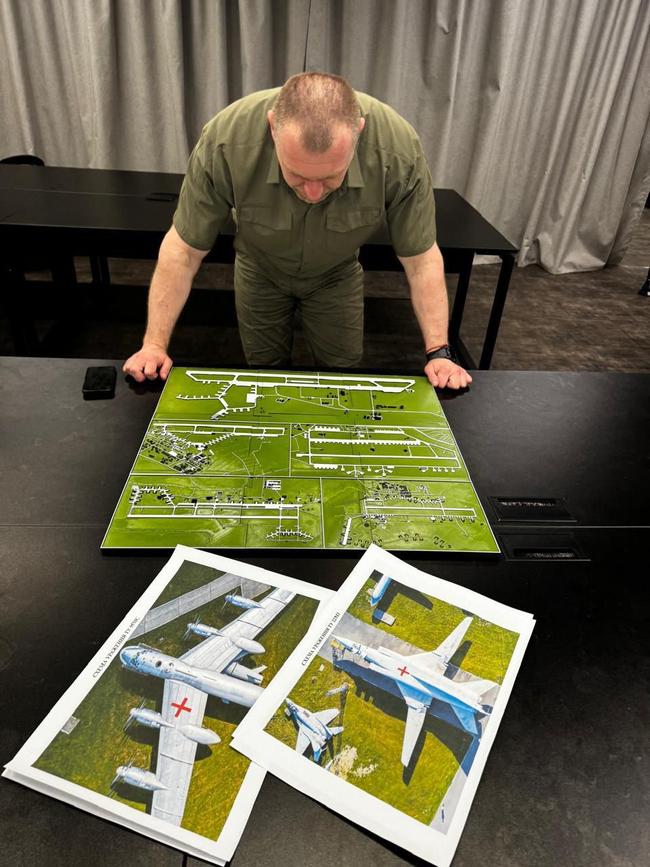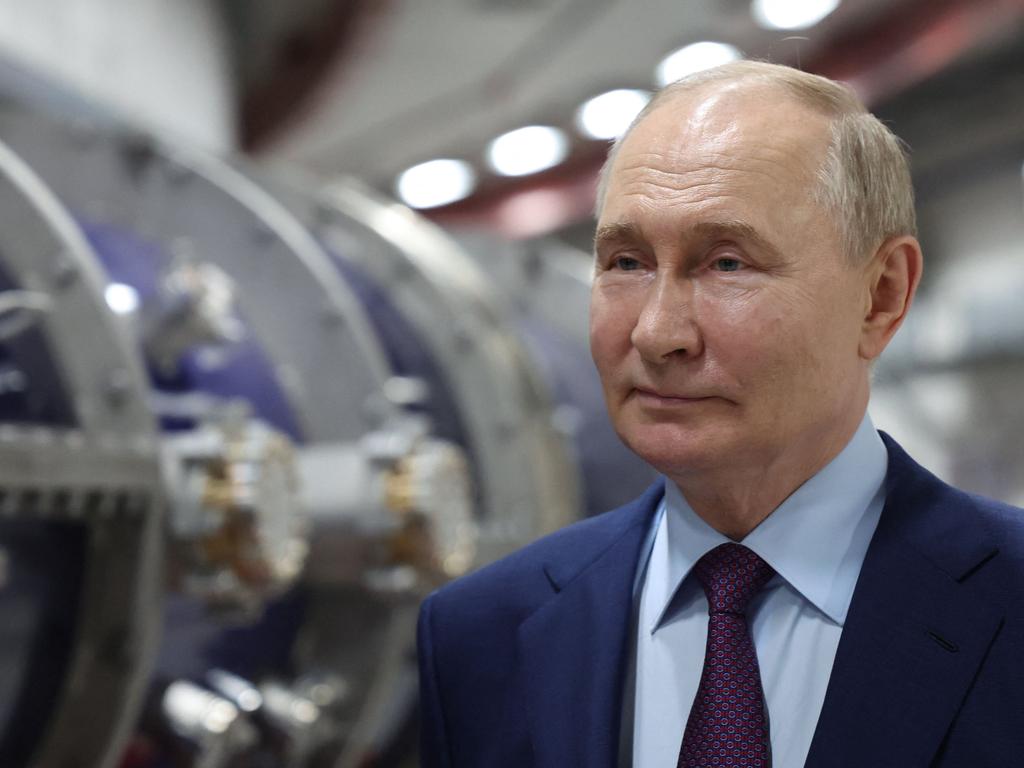How Ukraine’s spy thriller plot to destroy Russia’s air fleet unfolded
In deepest Siberia the Russian driver parked his container truck in a truck lay-by as he had been instructed and waited for a rendezvous. What came next appalled him.

In deepest Siberia the Russian driver parked his container truck in a truck lay-by as he had been instructed and waited for a rendezvous. He was having a quick smoke as he awaited the next stage of his itinerary. This was a load which had been on the road for several days originating in a warehouse in Chelyabinsk some 3400km away.
It was an overcast Sunday afternoon and the skies above the nearby Russian military air base of Irkutsk were relatively quiet: pilots of the cruise missile war planes from the 326th Heavy Bomber Aviation Division, part of the 37th Air Army, had finished their latest long-range attacks on eastern Ukraine flying thousands of kilometres to unload their bombs and had returned hours earlier.
In 2015, I met a scrappy Ukrainian volunteer unit learning to drop bombs from drones.
— Saint Javelin (@saintjavelin) June 2, 2025
What they’ve built since then defies belief. Pure, relentless ingenuity born from desperation and courage.
I never imagined I was witnessing the beginning of a revolution in warfare. pic.twitter.com/xQo9KVsXzu
Suddenly the driver heard a sound and he turned surprised as the container roof opened. His confusion turned to shock upon hearing a buzzing noise. First one drone, and then others, flew off over the highway towards the airport. What was going on?
Other truck drivers in the lay-by looked on too and recorded footage on their phones.
“The drone has taken off again, look at this joker, whoa out of nowhere. Well I’ll be dammed,’’ says one.
He adds with some admiration. “Holy smokes. Technology has come so far, why are we even driving, we should be piloting those drones”. But then there is a series of loud bangs and the enormity of what they are witnessing becomes apparent.
“Oh oh man, some idiot is spraying bullets everywhere, oh this is getting wild.’’
The hapless driver and his colleagues try to climb onto the roof, throwing stones at the drones to try to bring them down but suddenly, the truck catches fire.
At the airfield the military security fires unsuccessfully at the drones. Across the tarmac enormous destruction unfolds. Row upon row of huge plumes of black smoke fill the air as scores of the bombers explode, the drones having been programmed to narrow in on their fuel tanks.
The scene is repeated at other major military airfields – the heart of Russia’s aerial defence network – the Olenya Air Base in Murmansk, home of nuclear-capable bombers, the Ivanovo Air Base in Ivanovo, and the Dyagilevo Air Base in Ryazan.
Unwitting accomplices in air raid
The Russian drivers who had been hired to drive the trucks to these locations near to the air bases have no idea what the containers they were carrying really held. Nor did they realise they had become unsuspecting members of a plot that had been 18 months in the planning and was about to devastate Moscow’s air fleet.
The swarm of drones deployed when the cargo roofs opened remotely flew straight for Vladimir Putin’s prized strategic bombers that were held at the bases, some more than 4000 km from the Ukrainian border.
In 2015, I met a scrappy Ukrainian volunteer unit learning to drop bombs from drones.
— Saint Javelin (@saintjavelin) June 2, 2025
What they’ve built since then defies belief. Pure, relentless ingenuity born from desperation and courage.
I never imagined I was witnessing the beginning of a revolution in warfare. pic.twitter.com/xQo9KVsXzu
The driver in Murmursk was so panicked he ran around in circles as the drones launched and told the authorities he had been told to park the vehicle in the lay by near Olenegorsk – some 1200km from the Ukraine border – where somebody would meet him.
While four Tu-95s and an An-12 were decimated at this location, another prime target, the Ukrainka air base, nearer to the Sea of Japan, which houses 26 Tu-95s was left untouched. Two trucks approaching that military base caught fire before the drones could be let loose.
In all 41 bombers were destroyed – around a third of Putin’s bomber fleet, including the hard-to-replace bombers Tu-22M3, the Tu-95 and an A-50. The TU-95 long range bomber is known as “Bear” and can carry both nuclear and conventional weapons while the A-50 is a radar and command centre, vital to co-ordinate the nightly bombing raids.
Ukraine’s secret plan from Israeli playbook
Ukraine had been fighting its war against the Russian invasion for less than two years before military commanders began planning Operation Spider’s Web – which was so secret it was personally overseen by President Volodymyr Zelensky.
The intricacy and planning of the audacious plot was of the same caliber as the infamous Israeli operation to target Hezbollah with 5000 pagers fitted with remotely activated explosives in September 2024.


Vasyl Malyuk, the head of the Ukrainian security service, the SBU headed up the operation which, Mr Zelensky said in an address to the nation, was planned out of a building next door to the local Russian intelligence FSB service.
“A total of 117 drones were used, Mr Zelensky said, noting that the warehouse to prepare the drones inside the container trucks was located inside Russia under the noses of the regional office of the FSB.
Officials from Ukraine’s security service, the SBU, told reporters hundreds of Ukraine-made drones were smuggled inside Russia, and packed into pallets inside modified shipping containers which had been taken into the country separately. Operatives then hired the Russian drivers to take the trucks past the Russian air bases.
“At the right moment, the roofs of the cabins were opened remotely and the drones flew to hit Russian bombers,” an intelligence source told the Kyiv Independent.
In an added twist, the raid also took place 29 years to the day that Ukraine handed over to Russia dozens of the same strategic bombers, giving up the arsenal inherited from the USSR’s collapse in exchange, under the Budapest memorandum, for a promise not to be attacked.
Soviet Tu-95s, which are housed in the Poltava Museum of Long-Range Aviation in Ukraine, were used to help train the drones for maximum impact.
The Ukraine military said they used artificial intelligence to ensure the drones hit the weakest point of the bomber and they programmed the drones to hit the bombers’ fuel tanks as they sat on the tarmac.
A damaging, humiliating raid for Putin
The highly successful attack not only removes a significant ability of Russia to control the skies over Eastern Ukraine, but is a dangerous and embarrassing strike directly at Vladimir Putin.
Such was the fury inside the Kremlin, owners and workers at warehouses near to the one in Chelyabinsk were immediately arrested, as were the truck drivers and various witnesses.
But Putin’s real anger will lie with the General staff, and in particular the heads of the FSB’s counterintelligence unit and the Federal Protective Service who have been called in to explain how $2bn of sophisticated weaponry has been reduced to ash by low cost remote operated drones.
Russia’s comfort in basing the war planes in far flung outposts of Russia believing the distance would keep them beyond the reach of Ukraine and the donated western cruise missile systems such as the Storm Shadows and ATACMS, was a bad miscalculation.
“This is not yet a knockout, but quite a serious knockdown for the enemy,” said Iryna Vereshchuk, a top official in Zelensky’s office. “This is exactly what wars of the future will look like.”
Ukraine security expert Maria Avdeeva said the ingenuity of Ukraine to mobilise the drones will be taught in schools for years.
She said: “Russia can’t produce these bombers any more. The loss is massive. Nothing like this has ever been done before.”







To join the conversation, please log in. Don't have an account? Register
Join the conversation, you are commenting as Logout